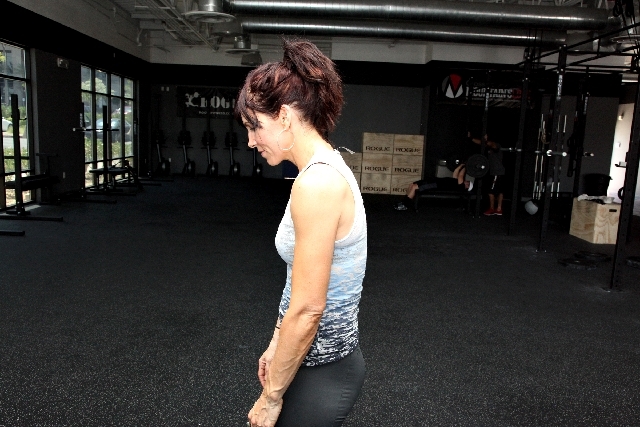Proper alignment of neck, spine can improve strength

Have you ever had to function without the Internet for a few days? It can be miserable. Just like that, you are stranded from the shores of lightning fast communication. There is no way to check www.lvrj.com for the news. Paying bills online is difficult if the browser won’t load. Being disconnected from your social media and clouds of information can make you feel shut off from the world.
It doesn’t seem fair to experience such disarray because of one simple neglected connection. In a similar way, your body can be disrupted by a simple form fault.
“Neutral head” is a verbal cue I use until I am blue in the face. It means to align the spine at the neck. It sounds simple, I know, but everyone forgets it.
The body has many built-in safety measures. When an ankle swells, it’s the body’s way of saying, “Back off, I need to heal.” Another safety protocol is when the body shuts off strength if the spine is in a bad position. If the head is tilted at the neck, the body is limited in how much strength it puts out. Watch Olympic lifters and gymnasts, they all have a neutral head when performing. This means they can put the right amount of strength into the task at hand.
The best neck pre-hab I recommend deals with positioning. The safest position for the spine during movement is protected by the strength of the core. That is why core conditioning is important. Because the neck is part of the spine, positioning is equally important. Luckily the trapezius muscles are very strong and can take on the responsibility.
Think about the first thing a baby learns to do with his/her brand new muscles. They learn to hold their head up. Sure, they learn to look around, too, but head position is important to movement. As they reach other milestones, guess where the head is, neutral. Watch a toddler pick something up off the ground. He or she uses a proper hip-dominated squat with a neutral head. It’s amazing.
So what happens as we grow up to lead us into altered movement patterns? That answer can vary. It could be any range or combination of things such as occupation, evolved movement patterns, choice of shoe style or sports.
Teaching your body to maintain a neutral head carries over into everyday life. Walking around with your head up and not looking at the ground is a huge victory in the battle for good posture. It also teaches spinal alignment during movement.
You move all day long. Keeping a neutral head, and thus a straight spine, will take your workouts to new heights.
I mentioned earlier that a bent spine will cause your body to shut down its strength production. Conversely, if you can maintain a straight spine, you can lift more and appear stronger. This is another reason I like squats and dead lifts. When athletes learn to keep their spine straight and fight to keep it straight under duress, they hit new personal records in their lifting. And not because they “got stronger”; it’s because they learned how to use their bodies.
The neutral head drill featured today is essentially just standing. It is easy and can be done anywhere. In fact it should be done everywhere. Drill this until it is habit.
Sometimes muscles get overactive or “tight.”
In this case, stretching can be used to help relax them. The neck stretch in today’s column is one of my favorites because it is effective in focusing on the musculature supporting the upper vertebrae.
Chris Huth is a Las Vegas trainer. He can be reached at 702trainer@gmail.com. If you are a Las Vegas trainer and want to share your love of fitness as a guest coach, please contact him. Consult your physician before beginning any exercise program.